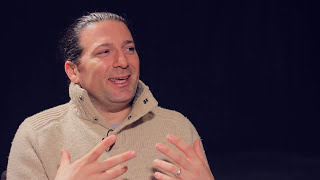In Chapter 21 of 21 in his 2012 Capture Your Flag interview, design educator Jon Kolko answers "How Can Young Design Professionals Better Prepare for Problem Solving Careers?" Kolko notes how younger design professionals should first focus on finding subject matter you are passionate about in your work. Second, he notes the importance of crafting a design process to create the work, honing it over time by reflecting on your work.
Jon Kolko is the founder and director of the Austin School for Design. He has authored multiple books on design, including "Wicked Problems: Problems Worth Solving." Previously he has held senior roles at venture accelerator Thinktiv and frog design and was a professor of Interactive and Industrial Design at the Savannah College of Art and Design (SCAD). Kolko earned his Masters in Human Computer Interaction (MHI) and BFA in Design from Carnegie Mellon University.
Transcript:
Erik Michielsen: How can young design professionals better prepare for problem solving careers?
Jon Kolko: Design professionals are already prepared for it. Just by calling yourself a designer and doing design process, design methods, you're solving problems. You could hone all of that.
And so, I think one of my best suggestions for younger designers is first to find topic areas that you're passionate about. And so, typically design education doesn’t focus on content. Design is not about content explicitly. It's a very malleable discipline but to young designers, I say find content that you're passionate about so that you can gain some kind of depth of impact and breadth of impact at once. And so, if you're passionate about sports equipment, great, good for you. If you're passionate about the homeless, great, good for you. But find some content subject matter that you're passionate about. But then, I would start to really craft a process.
For me and for my students, it's the use of center design process, it's about design with rather than design for, and it's about immersing ethnography, insights, ideation, and launching companies. That’s the process that works for us. It doesn’t have to be the process that works for everybody but knowing what that process is is critical. And a lot of designers really sort of have a -- have it like throw it at the wall and see what sticks and that’s their process.
And it comes to back to reflection and we spoke a little bit about that prior. It comes back to this idea of reflecting on your work and then going out of your way to improve method, improve the way that you approach things, and being able to articulate that process to other people. Again, knowledge through sharing, describing what your process is to people in a way that they get it.























